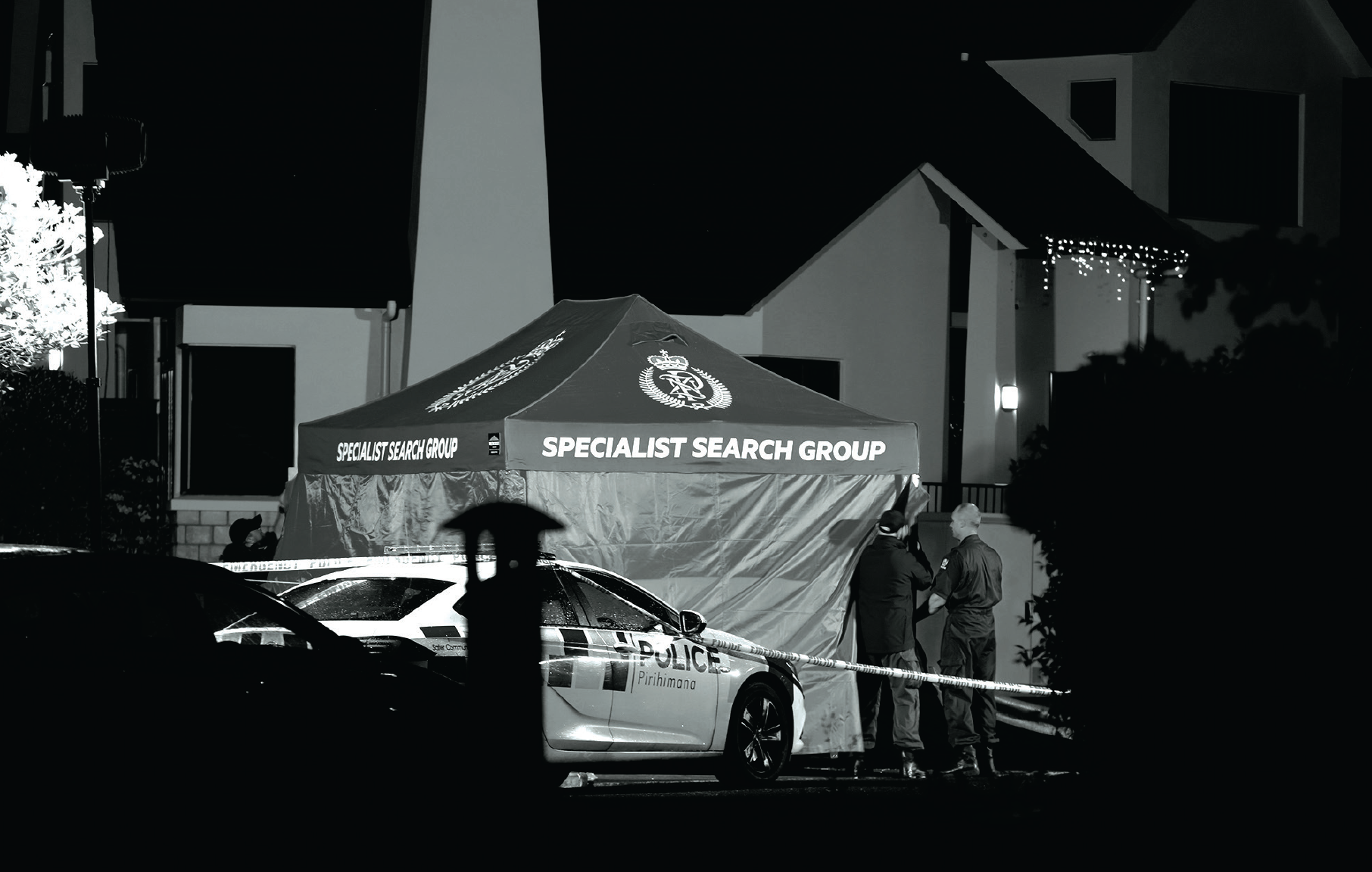

Gurdwara Wars
How a dispute over a Sikh homeland in India led to religious fanaticism and a bloody attempted assassination in New Zealand.
By Pete Mckenzie
At 10.09 pm on 23 December 2020, Harnek Singh pulled out of the parking lot of the Sikh temple he led in Papatoetoe. He had just finished an hours-long broadcast on Facebook and YouTube: one of hundreds he has produced through Radio Virsa, a small talkback show he founded almost a decade earlier for his small following of Sikhs.
Radio Virsa is one of the most controversial media companies in Sikhism, the world’s fifth-largest religion. In his broadcasts, Harnek, at that time a 53-year- old with a fuzzy beard and a kind squint, promoted what he described as a “moderate” vision in which Sikhs would remain bound together as a community but move away from what many would consider its core tenets.
The Akal Takht, Sikhism’s central religious body, saw those ideas as blasphemous and excommunicated Harnek. Several times, hundreds of Sikhs protested outside the gates of his temple. Many complained to the Broadcasting Standards Authority about his statements. Several threatened him personally. None of that stopped Harnek from broadcasting. Instead, he became more combative. Under his oversight, Radio Virsa spread rumours about the sex lives of his opponents’ children, suggested that the wife of a prominent Sikh figure had committed beastiality, and warned that his rivals might be kidnapped.
So, two nights before Christmas, several men took matters into their own hands. Sometime after Harnek drove his red ute south past the Papatoetoe railway station, a black Ford Ranger ute with stolen licence plates picked up his trail. When Harnek turned onto Manurewa’s Roscommon Rd, two more vehicles began following him. Then, as Harnek turned into his driveway, one of the vehicles rammed the passenger side of his car. The black Ford Ranger and the other vehicles screeched to a halt.
Then he saw three masked men with knives and baseball bats emerge from one of the three cars. Believing he was about to die, Harnek locked his car’s doors, leaned on the horn, and tucked his head towards the gearbox.
Confused, Harnek reached for his phone to call the police. Then he saw three masked men with knives and baseball bats emerge from one of the three cars. Believing he was about to die, Harnek locked his car’s doors, leaned on the horn, and tucked his head towards the gearbox. The men smashed his window and began stabbing. Two of the attackers were accidentally wounded in the chaos, their blood mingling with Harnek’s on the car floor.


Harnek suffered over forty stab wounds in the frenzied attack, which required four major surgeries at Middlemore Hospital to save his life.
The sound of the horn woke the neighbours; someone called the police. The attackers fled, leaving Harnek with 40 stab wounds. Blood spurted from several cut arteries. One of his ears was almost severed. As he lay unconscious in the vehicle, that wound was partly veiled by long, blood-clotted hair: during the attack, his would-be murderers had sliced away the traditional turban which all Sikh men wear, allowing his hair to hang free.
Over four surgeries, doctors at Middlemore Hospital saved Harnek’s life. Even then, he may never recover full use of his arms. Occasionally, he says, a coin-sized wound at the base of his head leaks blood onto his pillow as he sleeps. “He and his family,” a judge later noted, “are still afraid.”
Another judge observed that the attack “bears all the hallmarks of religious fanaticism”. It was dramatically out of keeping with the peaceful history of Sikhs in New Zealand. So how did ethno-religious tensions in India, a tense global fight over a Sikh homeland, and a pugilistic approach to talkback radio create such strife that a man almost died?
The life of Guru Nanak is largely a mystery. Born in 1469 to merchants in the far north of the Indian subcontinent, he spent much of his life as a wandering preacher, teaching a fused version of Hinduism and Islam that came to be known as Sikhism. The new religion spread quickly through the towns surrounding his birthplace: a fertile region known as Punjab whose vast fields of wheat have long fed the empires that rose around it.
That abundance has long driven conflict, which culminated in 1947. That year, the division of the subcontinent into the largely Hindu nation of India and the largely Muslim nation of Pakistan tore religiously diverse Punjab apart. Intense violence drove ten million people from their homes. Muslims shifted west and Sikhs and Hindus moved east. During one week in the eastern Punjab city of Amritsar, four thousand Muslim-owned buildings were ransacked and ruined. One scholar, Ian Talbot, described how, “On both sides of the 35-mile-long road between Amritsar and Lahore, there were heaps of corpses. It appeared as if the entire territory had been converted into an extensive graveyard.”
The experience convinced many Sikhs of the need for an independent Sikh homeland. The idea seemed viable: the ethnic cleansing meant roughly 60 percent of the population of Indian Punjab were now Sikhs. Having just won control, however, India was unwilling to relinquish its part of the region.
Partition had driven two million Punjabis abroad. Many began funnelling resources to an emerging secessionist movement at home. By the mid-1980s, the movement had turned violent; between 1980 and 1984, according to a 1987 CIA report, militants led by a charismatic preacher named Sant Jarnail Singh Bhindranwale killed 770 people.
The Indian government, led by prime minister Indira Gandhi, suspected that Bhindranwale was hiding in the Golden Temple: an enormous temple of marble and gold leaf that sits amid an enormous reflecting pool at the centre of Amritsar. It is Sikhism’s holiest site. Determined to root out Bhindranwale, Gandhi ordered her military to assault it.
